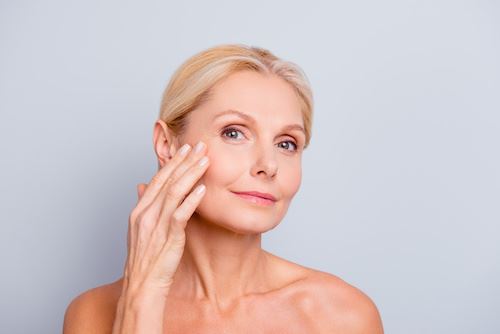
No matter what type of skincare treatments or routine you have to improve your skin, results won’t happen overnight. It’s very possible for certain treatments, like a fractional CO2 laser treatment, to show significant differences from one day to another, but the final results may not occur for several weeks later. This is due to many different factors, and one of them is with the body’s skin cycle.
Everyone’s skin cycle varies and can be anywhere from three days for young people or longer than 90 days for older people. Skin cell production and replacement slows over time, which could explain why you sometimes don’t get the desired results from certain skincare products. Understanding the skin cycle can help you get a better idea of what to expect from any skin treatment you undergo.
Understanding The Three Skin Layers
According to the American Skin Association, a person’s skin supports all other parts of the body and is instrumental in maintaining the body’s immune system. With this in mind, it’s important to have a basic understanding of the three layers of your skin. This includes the epidermis, the dermis and the subcutaneous layer. The epidermis is the outermost layer and contains melanocytes that play a major role in what color the skin is. Melanin production is the determining factor in whether you have lighter skin or darker skin. The number of skin cells do not make a difference in this regard.
The middle skin layer is called the dermis. It consists of nerves, oil glands, hair follicles, blood vessels and sweat glands. The dermis is what makes up the majority of the thickness of the skin. The elastic fibers and collagen in the dermis are what give your skin elasticity and strength.
The subcutaneous layer consists of nerves and blood vessels, but is primarily fatty tissue. This fatty tissue provides natural insulation to the body and also acts as a protective barrier to help prevent injuries to other body parts.
What Is The Skin Cycle?
You are always losing dead skin cells on the epidermis. According to Sciencing.com, the average person will lose between 30,000 and 40,000 dead skin cells every minute, which equates to roughly 50 million skin cells lost daily. Every time you wash your skin, rub up against something or even put on and take off clothing, dead skin cells come off in the process. These dead skin cells are then replaced by the new cells created in the epidermis, and they appear on the outside of the skin only when the dead skin cells are removed. Those new cells will then die and get washed or flaked away. The production of skin cells and the replacement of them is referred to as the skin cycle.
The Skin Rejuvenation Cycle Varies With Age
So how long does the skin cycle last? Among other factors, age plays the most significant determining factor. The skin cycle of a child may be as quickly as 3-5 days. People in their 30’s may have a skin cycle of at least 28 days and up to 45 days. People in their 50’s and older could have a skin cycle of anywhere between 60 and 90 days or longer. These variances are why medical professionals must take age into consideration when recommending a treatment plan. A fractional CO2 laser treatment may yield ideal results in a few weeks for younger people, but the same results could take several months for older people.
Skin Treatments Work, But Results Take Time
There are plenty of skin treatments available today, depending on the type of ailment or condition you have. However, companies that claim their products or services will yield instant results should be steered clear of. These claims simply aren’t realistic since they are not taking the skin cycle into consideration. Those treatments may work, but getting instant results is highly unlikely.
If you’re looking for treatment options to rejuvenate your skin, whether it’s fine lines, wrinkles, sagging skin, acne marks or more, these treatment options may be effective:
Chemical peel - a chemical peel is one of the most popular skincare treatments today. A professional can administer a chemical peel in less than 30 minutes and then the peeling process begins a few days later. Throughout the process, the old skin is being removed and replaced by new skin. The peeling is usually complete by the 12th day and you’ll slowly begin noticing smoother and more youthful skin over the next few months as your skin cycle evolves.
Fractional CO2 laser treatment - a fractional CO2 laser treatment works by sending a laser beam through the layers of the skin to create very small columns. The skin then works to repair those columns by replacing the old skin with new skin, while boosting elastin and collagen production in the process. You may notice a significant difference in the appearance of your skin the first week following your treatment, but it will continue improving over several months with new skin cycles and as the collagen production continues.
Patience is required any time you’re dealing with skin care. Too many people expect instant results from any product or service they use, which is simply unrealistic. Knowing how the skin cycle and your body works can help you understand that results will come later with a diligent and healthy skincare routine.
Skin Deep Laser Services is here to answer any questions you may have about your skin and the treatments available to you. Whether you need to know about CO2 laser post treatment care tips or if you’re unsure what to expect with a chemical peel, we will take the time to ensure you are comfortable with the decision you make. Our experts are highly trained and we use the best equipment available to help our clients experience the results they desire. To learn more about how we can help you, contact us today to schedule a consultation.


